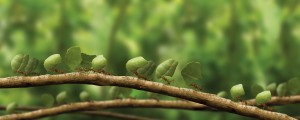What an adventure this has been… I think I’m about ready to hang up the hiking boots for a little while, but it sure was fun while it lasted. I learned many things about myself on this trip, one of them being my strange fascination with ants. Who knew the little pests could be so interesting? A couple ant species grabbed my attention on this trip: one being the massive and terrifying bullet ant, and the other, which I decided to focus my research on, was the leaf cutter ant. These little guys are the farmers of the insect world. The workers spend their entire lives cutting leaf particles from trees and carrying them to the nest to grow an underground fungus. The large soldiers spend their lives protecting the workers and the small minima workers spend their lives caring for the queen. To make things more interesting, all of these colony members, all 5-6 million of them, are offspring from the SAME queen. Yes, one queen can have SIX MILLION babies. What a life. This is why these little creatures became the centerpiece of my research project. I wanted to know more about them, and particularly how they react to water, which is quite abundant in the tropics.
Our study attempted to determine the spatial relationship between leaf cutter ant colonization and stream discharge, which is basically the velocity of a stream multiplied by its depth and width. In order to assess this relationship, we came up with four objectives:
1. To determine discharge in rivers and streams that intersect the Las Cruces trail system.
2. To find the number of leaf cutter ant colonization indicators in relation to the nearest stream, their distance to the shoreline, and their level of activity
3. To determine slope of leaf cutter ant colonizations in relation to the nearest stream.
4. To determine if there is a correlation between stream discharge and slope, distance, or activity of ants for each colonization indication.
After trudging along through the rainforest for a few days, dropping GPS points every time we saw a little green leaf gliding across the trail and timing a tennis ball while it floated downstream, we got our results. Unfortunately, our sample size was too small to get anything significant, but we did see a variation with activity level: lower activity colonization indicators tended to be located slightly farther from nearest streams, and higher activity levels were found closer to streams. Time was an issue, as it was in many other groups, and we felt as though a temporal component could have significantly benefitted this study as ant activity is highly dynamic and related to rainfall and flood events. Delineating watersheds would have also yielded a better analysis, but hey, we did our best and learned a lot while doing it. One day… one day I’ll return to study this little world.
and learned a lot while doing it. One day… one day I’ll return to study this little world.
Until next time, Costa Rica, now gotta go watch Antz.